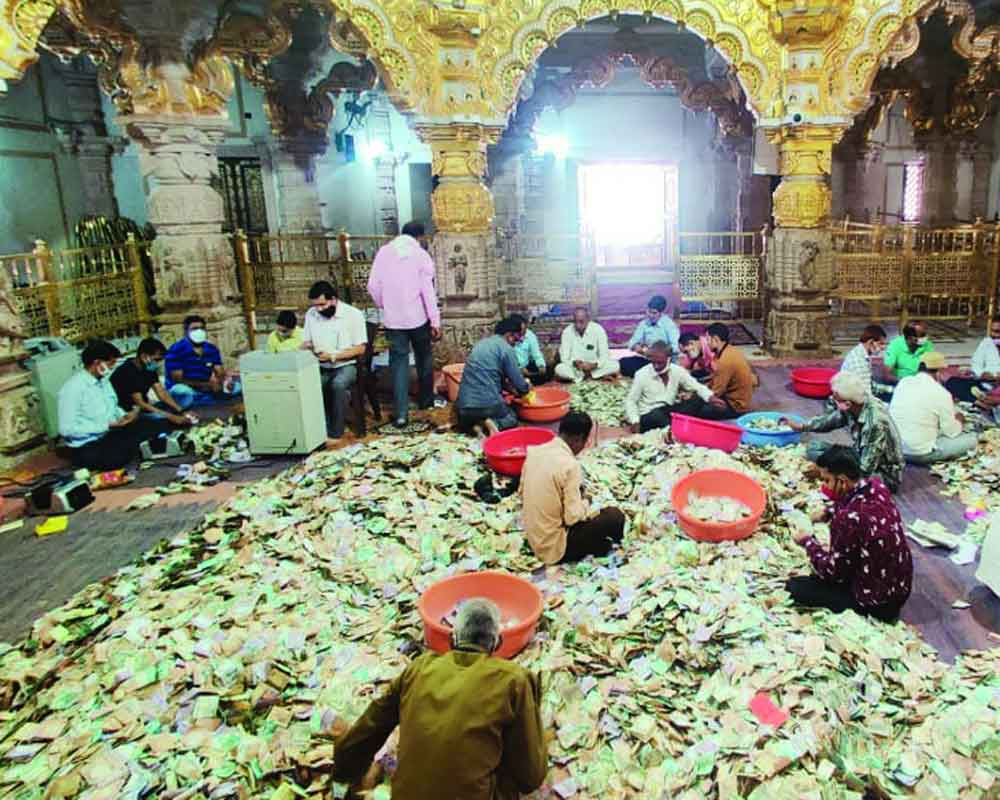Temple Economies: Mastering Epic Economic Triumph

Welcome to the mystical realm of the temple economy of India. From a rich history and heritage of the country, India hosts multiple magnificent temples which not only have served as places of worship but also have an essential role in the economic forefront of the country. The temples in the past and present have become a melting pot for a complex web of trade, commerce, and even entrepreneurship. This intricate setup can be called the temple economy. In the following article, various aspects of the temple economy of India will be discussed and presented.
The sections of the flourishing markets in and around the temples, to immense wealth accumulated through donations and endowments, the discussion will reveal the wdbos economic boost and influence of temples in society.

Historical Significance of Temple Economies
The temple economy has a glorious history in India and has been existing for thousands of years. In ancient India, temples have been the nucleus of social, cultural, and economic activities. In the medieval period, students learned not only as their religious centers but also arts and commerce expanded. The Kings were patrons of temples and affluent merchants bestowed huge charity to upraise the temple complexes. Temples were not only masters of worship but they centered on centers of business and scholarship. The temple economy was in full swing under the Cholas, Pallavas, and Vijayanagara Empire.
The rulers built grand temples and bestowed them with enormous land, money, and gold. The business activities in the temple hub drew many pilgrims, traders, and craftsmen into the region. The external economic activities were reinvested in the form of business and this was a proclamation of development and success.
Components of the Temple Economy
The temple economy in India has the following key components working together to make an entire self-sustaining system; temple functions, surrounding marketplaces, functions of the temples, temple administrations, and the temple-related occupations . The temple is the spiritual and cultural hub that appeals to devotees from all class levels. Economic activities generated within the temple, for example, religious ritual, festival, and declines in donations, creates jobs for people such as priests, musicians, and artisans who in turn participate in various temple activities .
The temple administration consists of religious leaders and the temple board of administrators; manage the temple’s day-to-day services and make sure it functions well. Furthermore, they maintain the records of donations and endowments . A temple town refers to a town surrounding a big temple that serves as one of the economies supporting cities . These towns are busy with spenders and shops that sell foodstuffs and gifts and hire citizens in trades that support pilgrims . The temple economy also allows many commerce practices like weaving, making jewelry and artistic sculptures and portraits, temple-related trades and ventures, and jobs for sculptors .
Role of Temples in Commerce and Trade
In ancient India, the temples played an important role in fostering commerce and trade. The temple towns emerged as major trade centers, and merchants from across the country would visit these towns in large numbers. The temple towns provided the merchants with an opportunity to exchange their goods with other commodities or sell them to the pilgrims visiting the temple. The temple itself was also a significant consumer of various goods and services. The donations made to the temple, including precious metals and stones, agricultural produce, etc., ensured that there was a constant demand for these commodities in the local markets.
The temple administration also engaged in trade and commerce, and the wealth generated through donations would be used to invest in various economic activities . Additionally, the temples also functioned as a financial institution, offering loans and credit facilities to the merchants and traders. The temple treasuries were used as secure storage facilities for the wealth, and the priest served as reliable custodians. Thus, the temples played an important role in promoting trade and commerce by offering financial support.
Contributions of Temple Economies to Local Communities
The temple economies have made significant contributions to the local communities in various ways. The wealth generated through temple activities was reinvested in the local economy, leading to the development of infrastructure, educational institutions, and healthcare facilities. The temple towns became centers of culture and learning, attracting scholars, artists, and artisans.
The temple economies also supported the growth of various industries and crafts. Skilled artisans, such as sculptors, painters, and weavers, found ample opportunities to showcase their talents and earn a livelihood. The presence of temples created a vibrant marketplace, stimulating economic growth and providing employment to the local population.
Furthermore, the temples played a crucial role in social welfare. They provided food, shelter, and healthcare services to the pilgrims and the local community. The temple administration would often undertake charitable activities, such as building and maintaining water tanks, schools, and hospitals, thereby improving the quality of life for the people residing in the vicinity of the temple.

Challenges Faced by Temple Economies
Despite their historical significance and contributions to society, temple economies in India face numerous challenges in the modern era. Urbanization, industrialization, and changing societal dynamics have led to a decline in the traditional temple economy. The encroachment of commercialization and tourism has sometimes disrupted the sanctity and economic balance of these temple towns.
The lack of proper regulation and governance has also resulted in mismanagement of temple resources. Corruption and misuse of funds have eroded public trust and affected the economic viability of some temples. Additionally, the decline in religious fervor and changing attitudes towards spirituality have impacted the flow of donations and endowments, affecting the financial stability of temples.
Modern-day Relevance of Temple Economies
Despite the challenges, the temple economies continue to hold relevance in the modern era. Many temple towns have adapted to the changing times by diversifying their economic activities. They have embraced tourism by promoting the cultural and architectural heritage of the temples, attracting both domestic and international visitors. The revenue generated through tourism has helped in the preservation and maintenance of these ancient structures.
Moreover, the temple economies have also embraced digital transformation. Online platforms and mobile applications have made it easier for devotees to make donations and participate in temple activities remotely. This has helped in expanding the reach of temples beyond geographical boundaries and has provided a source of revenue in these challenging times.
Examples of Famous Temple Economies in India
India is home to numerous famous temple economies that have left an indelible mark on the country’s economic history. One such example is the temple town of Tirupati in Andhra Pradesh. The Sri Venkateswara Temple attracts millions of devotees each year and generates significant revenue through donations and offerings. The temple administration has invested in various industries, including dairy farming, education, and healthcare, creating employment opportunities and contributing to the local economy.
Another prominent example is the temple town of Madurai in Tamil Nadu. The Meenakshi Amman Temple is not only a revered religious site but also a thriving center of art and culture. The temple attracts tourists from all over the world, boosting the local economy. The city of Varanasi in Uttar Pradesh, known for its famous Kashi Vishwanath Temple, is another example of a temple economy that has flourished for centuries, attracting pilgrims and tourists alike.

Preservation and Promotion of Temple Economies
Preservation and promotion of temple economies are crucial for maintaining their historical significance and economic relevance. Government bodies, non-profit organizations, and temple administrations must work together to ensure the sustainable development of these temple towns.
Efforts should be made to protect the architectural heritage of the temples, ensuring their preservation for future generations. Tourism promotion should be done in a responsible manner, balancing the economic benefits with the need to maintain the sanctity of these sacred sites. Steps should be taken to regulate and govern temple resources, ensuring transparency and accountability in their management.
Furthermore, initiatives should be undertaken to promote the traditional crafts and industries associated with temple economies. Skill development programs, marketing support, and financial assistance should be provided to artisans and craftsmen to preserve and revive these traditional art forms. If you found this exploration of temple economies intriguing, we invite you to delve deeper into our diverse array of articles, including one that sheds light on the enigmatic realm of North Korea. Discover the untold stories and complexities of our world, one fascinating narrative at a time.
Leave a Comment